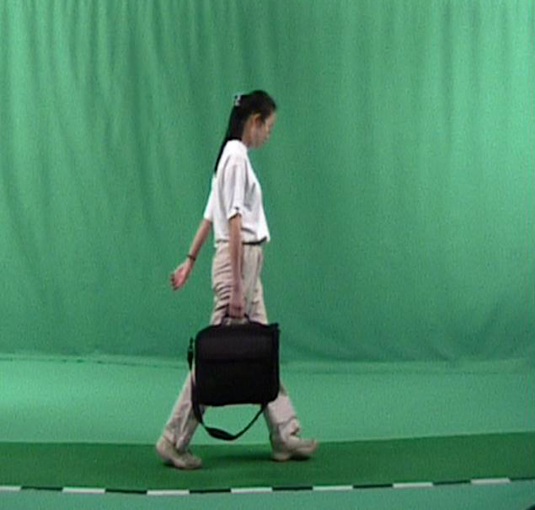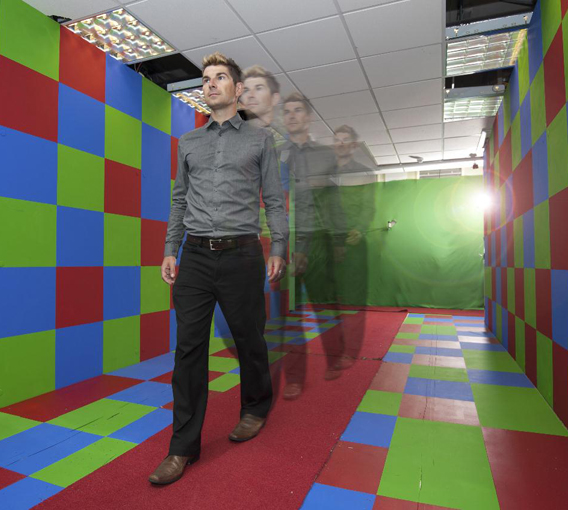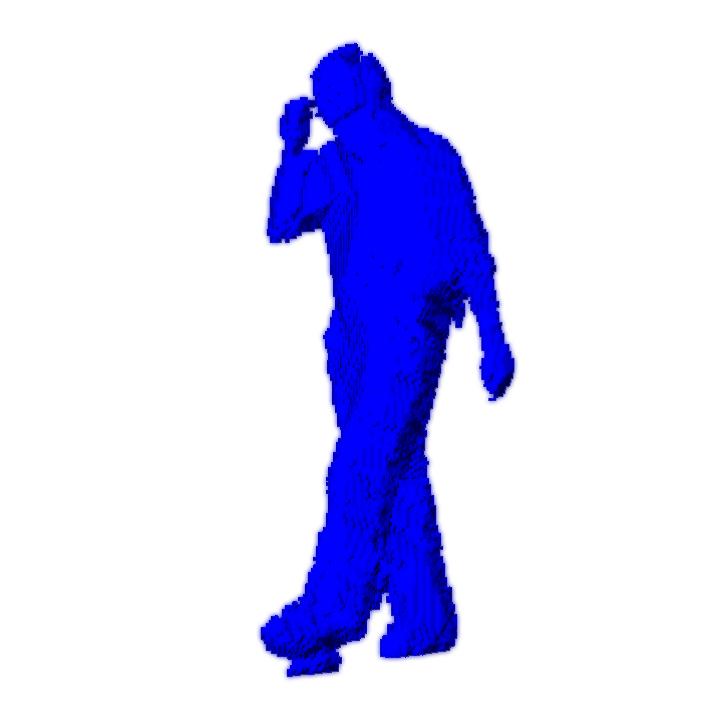Gait Biometrics
Gait has advantages as a biometric in that the gait can be perceived at low resolution of when other biometrics are concealed or are not available. As such it is highly suited to surveillance analysis. We are pioneers of gait as a biometric, authoring the first paper to demonstrate gait as a biometric, and our textbook (Nixon, Tan and Chellappa) which is the first in the field. Our research has appeared on many TV programmes internationally, and in much international press and radio.
HiD Gait Database Biometric tunnel
Database and Gait Tunnel
We have developed two main databases. Our HiD gait database recorded around 100 subjects walking in a (chromakey) laboratory environment. The sequences show subjects walking in a plane of view normal to that of the camera. Our later database is multimodal (gait, face and ear) and includes over 400 people walking in our gait tunnel. This is a multicamera environment where the subject’s gait is recorded by 12 cameras and one camera records a front face view and one camera records a snapshot of the side view for ear recognition.
Biometric Tunnel
Silhouette-based gait biometrics
Our earliest approaches concerned applying established statistical pattern recognition, such as Principal Components Analysis and Linear Discriminant Analysis which showed how we could recognise people by the motion of their silhouette – by their shape and by their motion. We have developed many new recognition techniques since our first approaches: some are an extension to motion of the techniques for shape description in computer vision: such as using Zernike moments and Fourier Descriptors for recognition. Other approaches include the analysis of the change in area of the human silhouette, and study of the factors which are important in automated gait recognition: a study of the factors which are most pertinent to the achievement of recognition by gait. We have also shown that a subject’s gait does not change appreciably over a period of nine months.
| 3D feature space for 10 subjects | 3D feature space for 10 subjects | 3D silhouette |
Model-based gait biometrics
Our earliest approaches to model-based analysis modelled the movement of the human limbs using penduli and led to the first paper which described gait as a biometric. This was later extended to model both walking and running, and we were the first to develop recognition by the way people run. Later, our analysis was to use the motion of vertices (the movement of the hip, knees and feet) and this led to the first viewpoint invariant model based analysis. More recently we have been developing 3D models, by fitting to the volume data available from our biometric tunnel and by modelling human motion using marionettes.
| Modelling walking and running | Extracting vertex points | Modelling 3D Walks |





